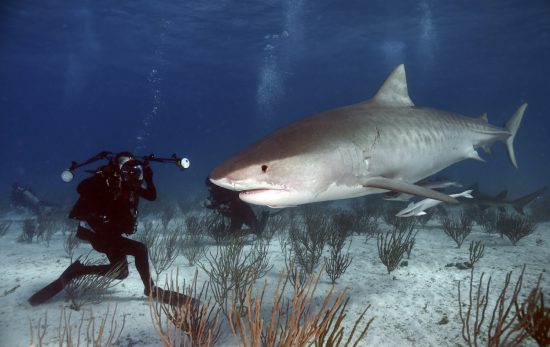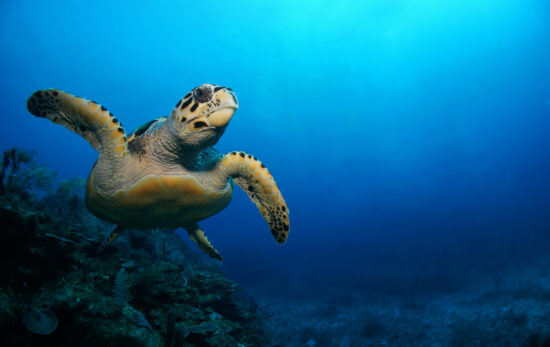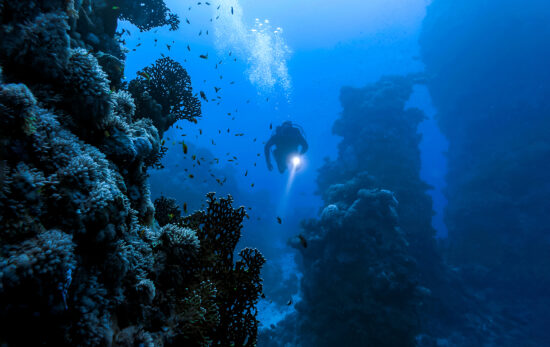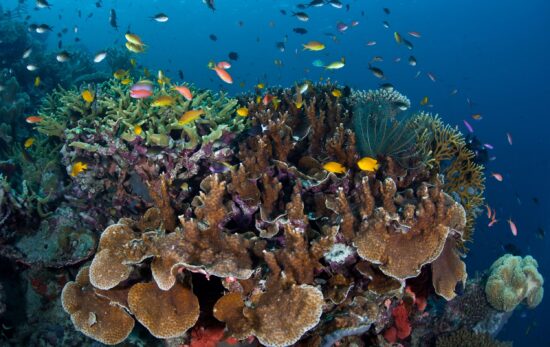As divers, we love every opportunity to observe ocean animals in their natural environments. While there’s no doubt that the surface waters are home to an incredible diversity of absolutely amazing marine life, the fact is that the vast majority of the world’s ocean – the deep ocean – is only able to be seen by submersibles. Fortunately, marine science groups are exploring these depths with the use of manned and un-manned submersibles, and they are sharing their observations with the rest of the world. The five deep sea creatures listed below are sure to blow your mind, and hopefully help you feel a deeper connection to the ocean animals that are typically hidden in the dark depths of our planet.
If you’re inspired to take your diving deeper… the PADI Deep Diver Specialty Course (now available on eLearning) will help you gain the necessary skills to dive down 130 ft (40 meters) below the surface. While not exactly the deep sea, the ability to explore new depths is bound to bring new opportunities to observe as many weird and wonderful creatures as possible.
Gulper Eel
At first glance, the gulper eel might look like a pretty regular eel, but once it opens its mouth, your jaw will surely drop in amazement. This deep sea eel species gets its common name from its massive gulping mouth, estimated to be about one quarter of its approximately two foot total body length. When the loosely hinged jaw is fully extended, the gulper eel goes from looking like a slender eel to looking like a big black balloon with a tail. They use this gigantic mouth like a net, to scoop up large amounts of small crustaceans; with the excess water that’s ingested being expelled via the gills. The large mouth may also be an adaptation to allow the gulper eel to eat a wider variety of prey when food in the deep sea is scarce.
Found worldwide in temperate and tropical seas, gulper eels typically inhabit depths ranging from roughly 500 to 3,000 meters (1,600 to 9,900 feet). Living completely without sunlight, gulper eels have worked out a way to produce a little bit of their own light, like many other deep sea creatures. A bioluminescent photophore at the tip of the gulper eel’s tail glows pink or flashes red to attract prey close to its enormous mouth.
Giant Seed Shrimp
The swimming orange ping-pong ball featured in the video below is actually a real deep sea creature commonly known as the giant seed shrimp. They got their name because they look like a shrimp inside of a seed pod. Additionally, in the world of seed shrimp this species is extremely large – measuring up to 3.2 centimeters (1.3 inches) across. The body of the giant seed shrimp is suspended in a semi-translucent, globular orb that is about 95% water. They use their feather-like antennae to swim around the vast deep ocean, and have near-neutral buoyancy. (You too can perfect your buoyancy with the PADI Peak Performance Buoyancy Specialty Course – now available on eLearning.)
If that isn’t strange enough, you can see the eye balls through the transparent orb. Despite living in complete darkness, the giant seed shrimp is equipped with a very large pair of eyes that are extremely effective at detecting light – thought to be able to find bioluminescent prey animals like copepods, arrow worms, and fish larvae. These quirky creatures are found throughout the world’s oceans from tropical to polar regions, typically at depths from 2,000 to 7,500 feet (600 to 2,300 meters).
Deep Sea Angler Fish
While angler fish are some of the most widely known deep sea fish species – famous for the lighted ‘fishing lure’ on their heads – they have very rarely been observed in their natural habitat. In fact, the video footage below is one of the few known videos of deep sea angler fish ever filmed.
That well-known bioluminescent lure on the anglerfish’s head is used to attract prey in the dark depths. Surprisingly, millions of special light-producing bacteria that live inside the lure are actually what make it glow. Some deep sea angler fish, like the fanfin angler fish in the video, also have thin bioluminescent projections surrounding their body, acting like a 3D array to sense movement in the surrounding environment.
Ready to really be blown away? Possibly the most out-of-this-world thing about deep sea angler fish is the relationship between males and females. When a small, free-swimming male angler fish encounters a large female angler fish, he latches onto her with his sharp teeth. Over time, the male becomes permanently fused to the female, forming a parasitic relationship where the male provides sperm and the female provides nutrients. A female deep sea angler fish can carry more than six males on her body at one time!
Long-Nosed Chimaera
The ethereal beauty of the long-nosed chimaera is undeniable. So much so, that they are often called ghost sharks. This nickname also stems from the fact that chimaera skeletons are made of cartilage, just like their shark and ray relatives. These big-eyed wonders are found worldwide, in temperate and tropical seas, in depths ranging from approximately 1,000 to 6,500 ft (300 to 2,000 meters).
The long pointed snout – clearly the long-nosed chimaera’s most distinguishing feature – has numerous sensory nerve endings used to find food like small fish. This species typically reaches a maximum size of about 4.5 feet (1.4 meters), with its long ‘nose’ making up nearly one third of the total body length. Additionally, if you look closely at the rare video footage below, you’ll notice a sharp spine on the first dorsal fin – this spine is venomous and is most likely used for defense in the dark depths.
Dumbo Octopus
Often called the cutest octopus in the world, the dumbo octopus gets its common name from the two ear-like fins that resemble Dumbo the elephant’s big floppy ears. By slowly flapping those ear-like fins, and using their eight arms to steer, dumbo octopuses move around the deep sea foraging for invertebrates that swim above the sea floor. On average, dumbo octopus only grow to about 20 to 30 centimeters (8 to 12 inches) long.
Although they are believed to be found worldwide, dumbo octopuses have actually only been observed around New Zealand, Australia, the Philippines, New Guinea, and off the coast of California. Amazingly, dumbo octopuses are the deepest living genus of all known octopuses – living at depths around 13,000 feet ( 4,000 meters). Because there are so few predators for the dumbo octopus at these extreme depths, they do not have an ink sac like most octopus species do.





